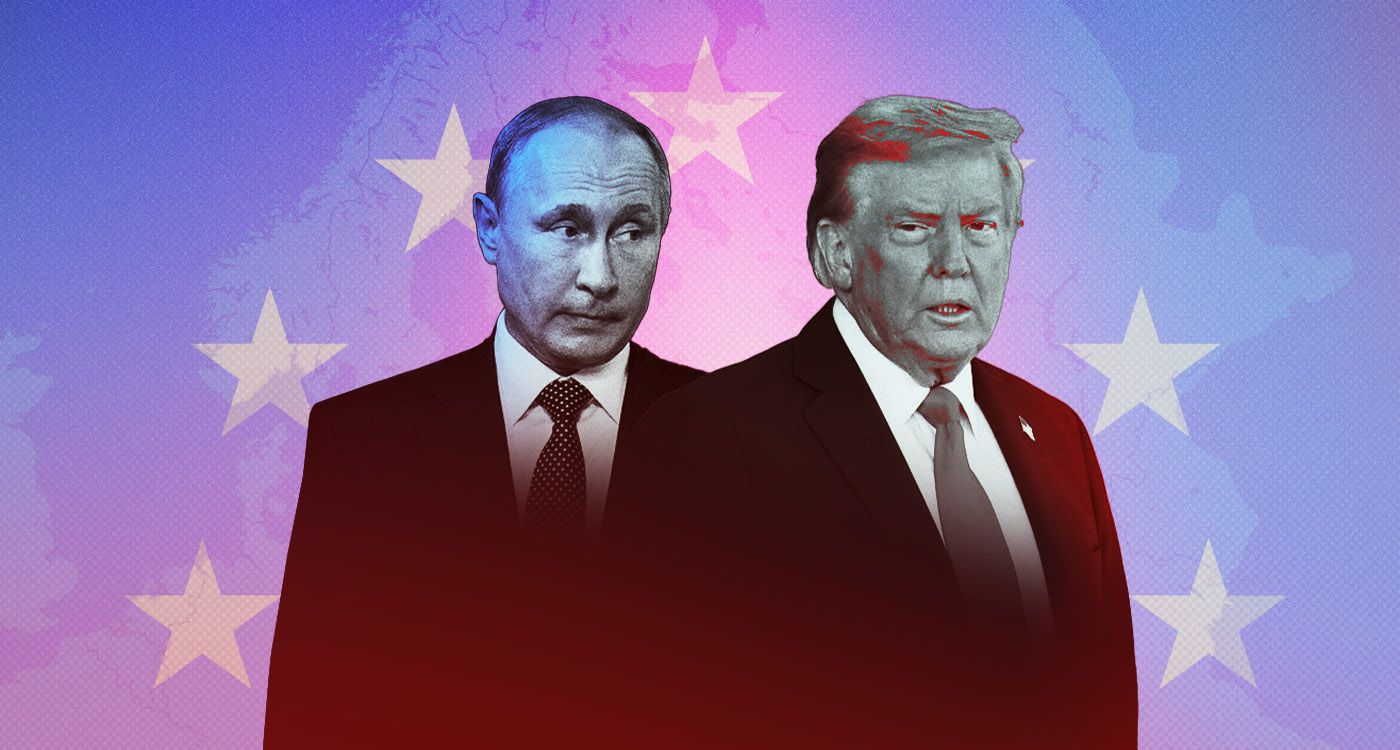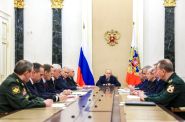- Home
- Middle East
- Trump, Putin and the Future of Europe: A Deal that Could Redraw the Map

©This is Beirut
On August 18, 2025, the White House became the stage for a meeting that may be remembered as a turning point in modern geopolitics. US President Donald Trump, Ukrainian President Volodymyr Zelenskyy and a cadre of European leaders gathered to discuss the Russia-Ukraine war. Europe’s top leaders crammed into the Oval Office, listening in silence as if Trump were their commander-in-chief. For one surreal moment, the continent that built the European Union looked like it was taking orders from Washington’s golden Versailles.
What emerged was not just a summit of awkward moments and unusual theatrics but the outline of a potential “Trump-Putin deal,” an agreement that, if realized, could reshape Europe’s political landscape for decades.
The meeting’s bizarre highlights – a hot mic of Trump boasting to Macron that Putin “wants to make a deal for me,” Zelenskyy’s quips about his suit, and even a letter to Melania Trump – showcased the transactional, personality-driven style of Trump’s diplomacy. This is not a policy architecture built on institutions but on charisma, leverage and personal branding. For Trump, geopolitics remains less about alliances and more about deal-making in real time.
But beneath the theatrics lies something much more consequential: a framework that could end the Ukraine war on terms closer to Russia’s vision than Europe’s.
Trump’s approach has three central pillars:
1. Direct bilateral talks between Putin and Zelenskyy, framed as the beginning of a process Trump will personally “close.”
2. Security guarantees funded by European cash and US arms exports, designed to keep Ukraine militarily viable while avoiding American troops on the ground.
3. Territorial concessions – Crimea and possibly parts of Donbas – alongside shelving Ukraine’s NATO ambitions.
In essence, Trump is offering Putin recognition of gains Russia already claims, in exchange for halting further escalation.
For Europe, this is both a relief and a nightmare. Relief because the war has drained its economies, strained NATO unity and unleashed a refugee crisis. Nightmare because a deal forged in Trump’s style risks undermining Europe’s long-term security architecture.
Germany’s Friedrich Merz and France’s Emmanuel Macron insisted on a ceasefire as a non-negotiable first step. Trump waved this off. That single disagreement tells the story: Europe sees security in process and stability, while Trump sees it in closure and headlines.
The awkward truth is that Europe may not have the leverage to stop him. With US military and financial power still indispensable, Europe is trapped between needing Washington’s protection and fearing Washington’s unilateralism.
Zelenskyy, dressed this time in a black stylish suit for Trump’s White House, caught between battlefield realities and political survival, is in an impossible position. To cede territory risks shattering his legitimacy at home. To resist Trump’s pressure risks losing Western backing. His charm offensive – the letter to Melania, the banter, the diplomatic soft touches – was less about personal affection and more about survival in a room where Trump, not Kyiv, held the cards.
What’s not being said in the headlines is this: if the deal moves forward, Ukraine will be forced into a compromise that looks less like victory and more like managed defeat. As Kissinger once said, “It may be dangerous to be America's enemy, but to be America's friend is fatal.”
Beneath the headlines lie three overlooked consequences:
- If Ukraine is barred from NATO, it sends a signal to Eastern Europe – Poland, the Baltics – that US security guarantees may not be ironclad. The Kremlin would view this as validation of its sphere-of-influence doctrine, potentially emboldening pressure on states once seen as untouchable.
- The “Ceasefire Gap” could be Russia’s weapon. Without a ceasefire, Putin can negotiate while advancing militarily. This means Ukraine could walk into a deal from a position of ever-decreasing strength, giving Russia leverage that headlines about “peace” would obscure.
- Europe’s strategic autonomy will be tested. For years, Europe has talked about reducing dependence on Washington for security. This deal could accelerate that push – not because Europe wants to break with America, but because Trump’s unpredictability makes planning impossible. Expect defense budgets in Paris, Berlin and Warsaw to grow even faster, and EU debates about a joint army to return with urgency.
Putin, isolated since 2022, has now flipped the board. From pariah to guest of honor in Alaska, from sanctioned leader to Trump’s partner in peace, this is a propaganda coup of historic proportions. Even if no final agreement materializes, the optics alone have already broken his isolation.
The Trump-Putin deal, if it emerges, won’t be the end of Europe’s troubles. It will be a pause, one that cements Russian territorial gains, fractures Western unity and tests Ukraine’s sovereignty to its breaking point. Trump may secure a headline-grabbing “deal of the century,” but the cost will be borne by Kyiv and by a Europe suddenly forced to confront the reality of living under an American ally who negotiates with Moscow first and Brussels second.
The true question is not whether Trump and Putin can reach an agreement. It’s whether Europe and Ukraine can survive the terms of that agreement.
Read more




Comments